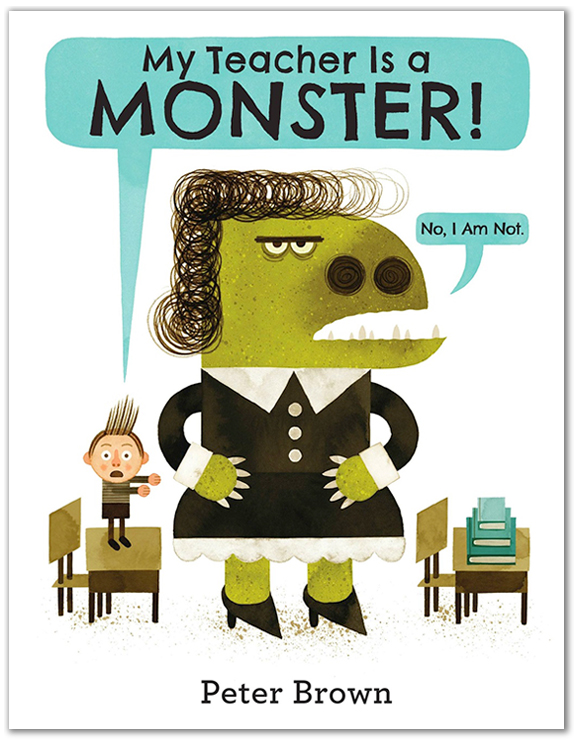
What does it mean to sort objects into categories?
 Readaloud: Read My Teacher is a Monster! by Peter Brown and see if the students notice how the teacher changes as she and Bobby spend time together.
Readaloud: Read My Teacher is a Monster! by Peter Brown and see if the students notice how the teacher changes as she and Bobby spend time together.
Tell the students that they will create their own "Three of These Things" challenges today. Model a couple of examples and let them know that they must not copy your ideas.
1 = All four drawings are completely different, completely the same, or done as two pairs
2 = I cannot figure out which one doesn't belong, but student explains sufficiently
3 = I am able to figure out which one doesn't belong
4 = Answer is obvious (or super sneaky and clever), drawings are unique/original
If there is time at the end, share student creations with the class.
 st one characteristic in common. Ask students to stand up if they are wearing sneakers / long sleeves / a shirt with words on it / etc.
st one characteristic in common. Ask students to stand up if they are wearing sneakers / long sleeves / a shirt with words on it / etc.
AASL: I.B.3 - Generating products that illustrate learning; III.A.2 - Developing new understandings through engagement in a learning group; III.D.1 - Actively contributing to group discussions; IV.B.4 - Organizing information by priority, topic, or other systematic scheme; V.A.1 - Reading widely and deeply in multiple formats and write and create for a variety of purposes.
RI Core: RL.1.7 - Use illustrations and details in a story to describe its characters, setting, or events; SL.1.2 - Ask and answer questions about key details in a text read aloud or information presented orally or through other media; 1.MD.C.4 - Organize, represent, and interpret data with up to three categories; ask and answer questions about the total number of data points, how many in each category, and how many more or less are in one category than in another.
Rhode Island Cross-Curricular Proficiencies: Communication - Select and analyze relevant information; Use a method of communication (e.g., written, oral, visual, graphic, audio, and/or interactive) to present ideas; Problem Solving and Critical Thinking - Identify relevant information/data from resources and analyze patterns and trends to identify relationships.
Rhode Island School Library Curriculum Priority Skills: 1.1 - Recognizes the systematic way the library organizes fiction and picture books; With help, sorts and categorizes “like” and “different” objects; Verbally and physically demonstrates simple organizational skills such as sorting and categorizing objects and information; Sorts books by fiction vs. nonfiction; Uses writing process, emergent writing, and drawing to develop expression of new understandings; 3.2 - Participates in collaborative conversations with peers and adults to share ideas and information